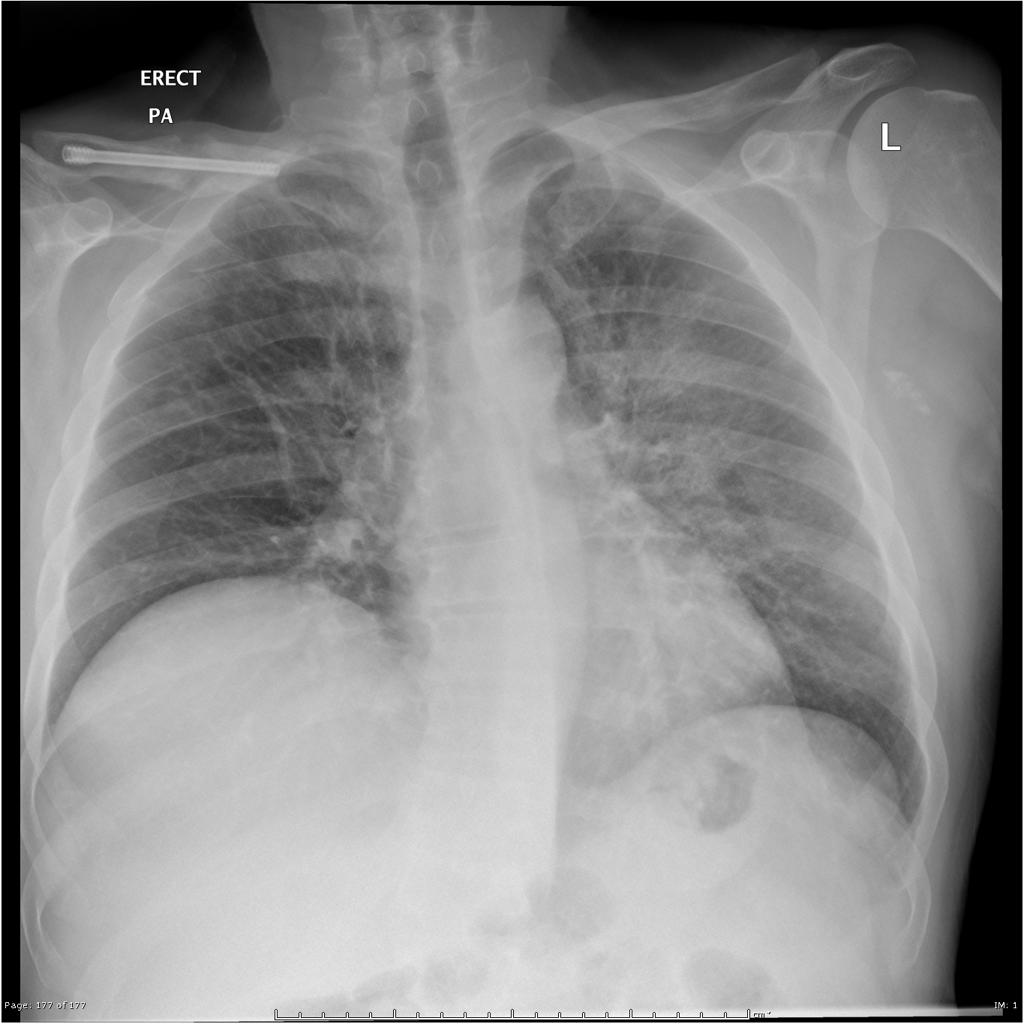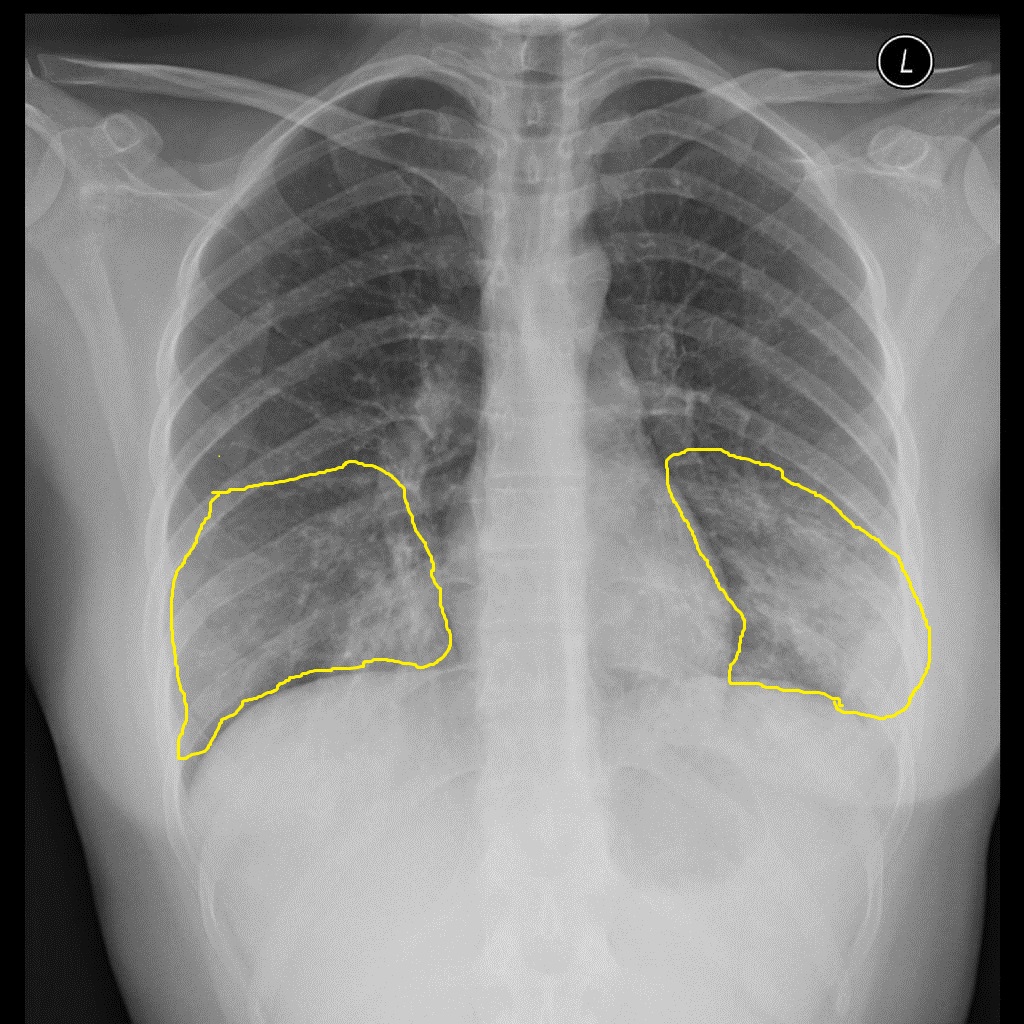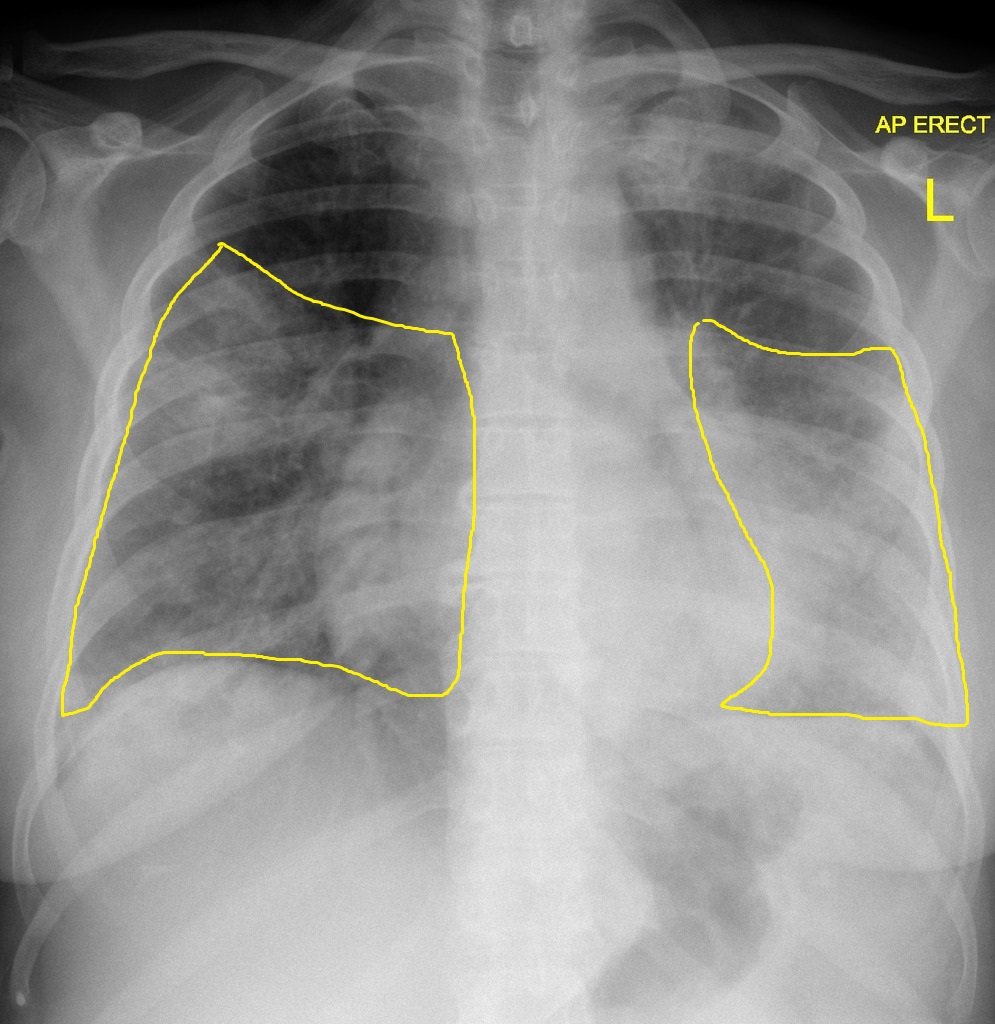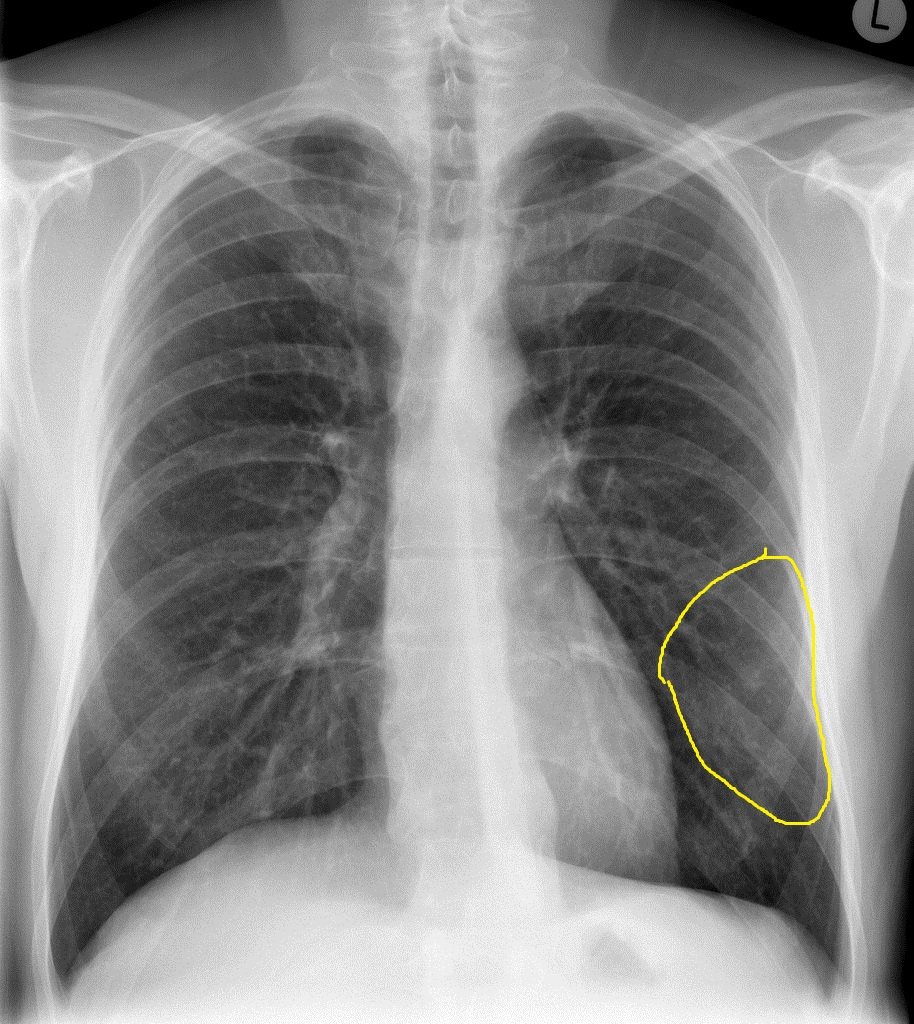Q fever differential diagnosis: Difference between revisions
No edit summary |
No edit summary |
||
| Line 10: | Line 10: | ||
!Prominent clinical features | !Prominent clinical features | ||
!Lab findings | !Lab findings | ||
!Chest X ray | !Chest X-ray | ||
|- | |- | ||
|Q fever | |Q fever | ||
| Line 20: | Line 20: | ||
* [[Antibody]] detection using [[Immunofluorescence|indirect immunofluorescence]] (IIF) is the preferred method for diagnosis. | * [[Antibody]] detection using [[Immunofluorescence|indirect immunofluorescence]] (IIF) is the preferred method for diagnosis. | ||
* [[Polymerase chain reaction|PCR]] can be used if IIF is negative, or very early once disease is suspected. | * [[Polymerase chain reaction|PCR]] can be used if IIF is negative, or very early once disease is suspected. | ||
* [[Coxiella burnetii|''C. burnetii'']] does not grow on ordinary blood cultures, but can be cultivated on special media as embryonated eggs or cell culture. | * [[Coxiella burnetii|''C. burnetii'']] does not grow on ordinary blood cultures, but can be cultivated on special media such as embryonated eggs or cell culture. | ||
* A two-to-three fold increase in [[Aspartate transaminase|AST]] and [[ALT]] is seen in most patients. | * A two-to-three fold increase in [[Aspartate transaminase|AST]] and [[ALT]] is seen in most patients. | ||
| | | | ||
| Line 41: | Line 41: | ||
* [[Legionellosis]] is characterized by cough that is slightly productive.<ref name="pmid23422417">{{cite journal |vauthors=Irfan M, Farooqi J, Hasan R |title=Community-acquired pneumonia |journal=Curr Opin Pulm Med |volume=19 |issue=3 |pages=198–208 |year=2013 |pmid=23422417 |doi=10.1097/MCP.0b013e32835f1d12 |url=}}</ref> | * [[Legionellosis]] is characterized by cough that is slightly productive.<ref name="pmid23422417">{{cite journal |vauthors=Irfan M, Farooqi J, Hasan R |title=Community-acquired pneumonia |journal=Curr Opin Pulm Med |volume=19 |issue=3 |pages=198–208 |year=2013 |pmid=23422417 |doi=10.1097/MCP.0b013e32835f1d12 |url=}}</ref> | ||
* Constitutional symptoms such as [[chills]], [[myalgia]], and [[arthralgia]]. | * Constitutional symptoms such as [[chills]], [[myalgia]], and [[arthralgia]]. | ||
* Gastrointestinal symptoms such as [[diarrhea]], [[nausea]] and [[vomiting]]. | * Gastrointestinal symptoms such as [[diarrhea]], [[nausea]], and [[vomiting]]. | ||
| | | | ||
* Labs are nonspecific for diagnosing [[legionellosis]] | * Labs are nonspecific for diagnosing [[legionellosis]] | ||
Revision as of 18:33, 3 August 2017
|
Q fever Microchapters |
|
Diagnosis |
|---|
|
Treatment |
|
Case Studies |
|
Q fever differential diagnosis On the Web |
|
American Roentgen Ray Society Images of Q fever differential diagnosis |
|
Risk calculators and risk factors for Q fever differential diagnosis |
Editor-In-Chief: C. Michael Gibson, M.S., M.D. [1];Associate Editor(s)-in-Chief: Ahmed Younes M.B.B.CH [2]
Overview
Q fever must be differentiated from other diseases that cause atypical pneumonia such as Mycoplasma pneumonia and legionellosis.
Differentiating Q fever from other diseases
Q fever must be differentiated from other diseases that cause atypical pneumonia such as Mycoplasma pneumonia and legionellosis.
| Disease | Prominent clinical features | Lab findings | Chest X-ray |
|---|---|---|---|
| Q fever |
|
 | |
| Mycoplasma pneumonia |
|
|
 |
| Legionellosis |
|
|
 |
| Chlamydia pneumonia |
|
|
 |
Table 1: Differentiating psittacosis from other diseases
| Clinical feature | Cough | Sputum | Dyspnea | Sore throat | Headache | Confusion | Diarrhea | Chest radiograph changes | Hyponatremia | Leukopenia | Abnormal Liver function tests | Treatment |
|---|---|---|---|---|---|---|---|---|---|---|---|---|
| Psittacosis | ++ | - | + | - | +++ | + | Minimal |
|
- | + | - | Doxycycline |
| C.pneumoniae pneumonia | + | + | + | +++ | ++ | + | - |
|
- | - | - | Doxycycline, Azithromycin |
| M. pneumoniae pneumonia | ++ | ++ | ++ | - | - | - | - |
|
- | - | + | Doxycycline |
| L. Pneumophila infection | + | +++ | +++ | - | + | ++ | + | Often Multifocal | ++ | + | ++ | Doxycycline |
| Influenza | ++ | ++ | ++ | ++ | ++ | +/- | +/- |
|
- | - | - | zanamivir, oseltamivir, |
| Endocarditis | ++ | ++ | + | - | - | - | - |
bases bilaterally |
- | +/- | +/- | Vancomycin |
| Coxiella burnetii infection | ++ | - | + | +/- | - | +/- | Minimal |
|
- | +/- | =/- | Doxycycline |
| Leptospirosis | ++ | + | ++ | + | + | ++ | - |
|
+++ | Doxycycline, azithromycin, amoxicillin | ||
| Brucellosis | ++ | - | + | - | ++ | + | - |
|
-/+ | +/- | +/- | Doxycycline, rifampin |
Key;
+, occurs in some cases
++, occurs in many cases,
+++, occurs frequently